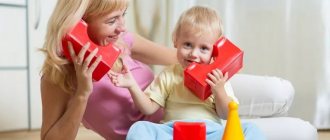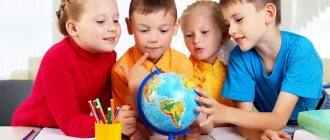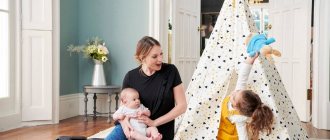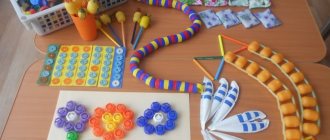Speech therapy classes for children at home are constant communication with the child in a playful way. Once your child is interested, you can engage with him by playing games for speech development such as
- finger games (games for developing fine motor skills)
- articulatory gymnastics
- hearing development games
- games for sound imitations and logorhythmics (poems with movements)
The most difficult thing is to interest the child. And this is a very serious task. After all, sitting down a little fidget is not so easy. In general, it is not necessary to sit him down; you can work with the child when he is playing in his hut or jumping on the sofa. Classes should be held in a playful way. Then it will be easier for you, and the child will learn the material without hysterics and whims.
A few tips before starting homeschooling with your children:
- classes should initially be short (2-3 minutes). Then we gradually increase them. Maximum 15-20 minutes at a time.
- The child should enjoy the activities. Don’t force or insist, as this can completely discourage your child from wanting to do anything.
- It’s better to practice more often, but little by little. Frequently performing the same exercise, the child develops a skill.
- use laughter during classes. Do not scold for incorrect pronunciation or if the child fails to do something. It’s better to find out with your child why his tongue is so naughty and how to fix it. It is better to be an ally and friend to a child than a strict teacher.
Finger games
Finger games are one of the types of development of fine motor skills. There is a close relationship between the human hand and the speech center of the brain.
Finger gymnastics for children 1-2 years old
- Cam
This finger is small (bend the little finger)
This finger is weak, (we bend the ring finger) This finger is long, (we bend the middle finger)
This finger is strong, (bend the index finger) This finger is fat, (bend the thumb)
Well, together - fist!
- On a visit
Visiting the thumb (the thumb is bent, the rest are clenched into a fist)
They came straight to the house:
Index and middle, (in accordance with the text, straighten your fingers alternately)
Nameless and last.
Little finger himself
He knocked on the threshold.
Together, fingers are friends, (clench your fingers into a fist and unclench them)
They cannot live without each other.
- Squirrel sitting on a cart
A squirrel sits on a cart, (clenching and unclenching her fingers into a fist in the rhythm of a nursery rhyme) She sells nuts: (we begin to bend our fingers) To the little fox-sister, to the sparrow, to the titmouse, to the fat-fifted bear, to the mustachioed hare, to whom in the goiter, to whom in the scarf, to whom in the sweetie .
What helps children develop speech?
It is not at all necessary to develop a child’s speech at the age of 1 with the help of special classes, which the baby is not yet able to withstand due to poor perseverance, low concentration and lack of interest in learning. Most often, speech skills are developed in direct communication with adults. Ensuring active communication is imperative. After all, speech gives the baby the opportunity to:
- communicate with adults;
- recognize the names of surrounding objects, correlate them with the actions and characteristics of objects;
- convey impressions and emotions;
- develop thinking;
- consolidate life experience;
- develop creative abilities;
- develop memory and imagination.
What techniques will help parents improve their children’s speech abilities? There are many of them, and they are aimed at development:
- motor skills (gross and fine). We talked about this in more detail here;
- sensory abilities;
- facial expressions and gestures. What gestures are useful to learn with kids is described in this article;
- sense of balance and rhythm;
- articulation. Examples of articulation exercises are in this article;
- phonemic hearing. Read more about this here;
- speech breathing. What games develop it are described here;
- intonation;
- vocabulary.
The child’s readiness for further improvement of speech skills depends on how the parents developed them up to a year, how they prepared the conceptual and articulatory apparatus for further work. How to continue it? Here are some of the most important techniques:
- Constant speech environment. Adults should comment on all their actions, as well as the actions of the baby.
- Singing. You need to sing funny songs and lullabies for your baby more often.
- Verbal accompaniment of all regime moments. It would be good if this accompaniment were funny nursery rhymes.
- Creating situations where the baby needs to answer questions, name objects, and express his desires. At the same time, it is useful not to understand if the baby is trying to “get off” with gestures.
- Reading children's books with fairy tales and rhymes, looking at and describing the pictures in them.
- General gymnastics and active outdoor games that strengthen the main muscle groups.
- Creativity (drawing, sandbox games, modeling).
For the development of speech, a close emotional connection between the baby and the parents is necessary. The baby should feel that he is loved, supported, shared in his joys and worries, respected and protected.
When communicating with your child, try not just to name objects - compare them with each other (I have a big ball, and Dashenka has a small one; this closet is high, and the bedside table is low). Explain to your child the cause-and-effect relationships and motivation (we get dressed - let's go for a walk, wash our hands - it's time to eat, music is playing - we'll dance). Show the result of your actions (Roma washed his hands - now they are clean, Katyusha dressed warmly - she won’t get sick during a walk).
Finger games for children 2-3 years old
- Maple
The wind quietly shakes the maple, (fingers spread out and stretch up) Tilts to the right, to the left: (we swing our palms right and left) Once - tilt and twice - tilt, (tilt left - right palms low and low) The maple leaves rustled. (move your fingers)
- Ship
A boat is sailing along the river,
He swims from afar, (fold your arms like a boat and make wave-like movements)
There are four on the boat. A very brave sailor. (we show raised in
top 4 fingers)
They have ears on the top of their heads (raise our hands to the head, show the ears with bent palms)
They have long tails (put your hand to the lower back, pretend to move the tail)
But only cats are scary to them,
Only cats and cats. (raise both hands to the head, pretend to be cat claws and hiss)
- Cake
We remember the dough with our hands (we squeeze and unclench our fingers)
Let's bake a sweet cake. (like kneading dough)
Lubricate the middle with jam (circular movements with palms on the table)
And the top with sweet cream (circular movements with your palms against each other)
And coconut crumbs
We will sprinkle the cake a little (sprinkle the “crumbs” with the fingers of both hands)
And then we’ll make tea -
Invite a friend to visit! (one hand shakes the other)
What does speech development depend on?
The development of a child’s speech depends on many factors: characteristics of physical development, emotional connection with parents.
The development of a child’s speech depends on 4 factors , including anatomical, physiological, emotional and social components:
- Emotional connection with parents: For young children, the presence of mother and father, grandparents, is important. Safety, predictability, understanding and respect for needs are all fertile grounds for overall development, including the conversational component.
- Satisfying the need to communicate with parents. First, nonverbal communication skills are formed - facial expressions, gestures, body movements, and then comes verbalization. Therefore, not only games are important for the development of speech - an emotional response to crying, fun, hugs, addressing the baby, calling him by name - all these are prerequisites for the child to begin learning to speak at the age of 1.
- Development of fine motor skills. There is a direct connection between the development of the speech centers of the brain and fine motor skills of the hands. Knowing this physiological feature, you can start the development of conversational skills through finger games and tactile palm analyzers.
- Formation of the speech apparatus: the correct anatomical structure of the tongue, palate, larynx and vocal cords are important prerequisites for the development of speech in children of the first years of life. Sometimes the delay in speaking skills is associated with incorrect positioning of the frenulum of the tongue: it is larger than necessary, and it does not reach the palate. In such cases, an incision of the frenulum is made under stationary conditions. The development of the circular muscles of the mouth and cheeks is also taken into account. With one-year-old children, you need to do more than just repeat sounds - it is important to teach them to drink from a straw, blow soap bubbles and rubber balls.
Only a harmonious combination of these four components guarantees the timely development of speech in children from 1 to 2 years old. Therefore, classes should include a set of different games, taking into account the characteristics of a child one year old and older.
Articulation gymnastics
Articulation gymnastics is gymnastics for the tongue and lips. The tongue is the main muscle of the speech organs. The tongue must be trained and developed so that it can correctly perform certain specific movements, which are called sound pronunciation. Lips and tongue should be flexible and strong.
To perform articulation gymnastics you need a mirror. The child must see how his tongue works and where it is located. In order to bring the exercises to automaticity, you need to constantly practice. It is important to perform the exercises correctly and carefully monitor the position of the tongue.
You need to exercise every day for 5-7 minutes. Preferably 2 times a day. The result is correct and clear speech.
"Ball"
. Ask your baby to puff out his cheeks and deflate them. If he doesn't succeed right away, lightly press on them. Subsequently, you can inflate your cheeks one by one.
"Guess"
. Prepare hot and cold water, a teaspoon. When the child closes his eyes, touch the lips of the tongue with the device and ask him to guess what kind of water the spoon has been in.
"House"
. Opening his mouth (house), the baby shows his tongue, then hides it again.
"Gates"
. Opening your mouth wide, you need to secure the position (5 – 7 seconds).
"Smile"
. Smile and hold this position for the count.
"Delicious jam"
. Ask your baby to pretend to lick the jam from his lips. First from the top, then from the bottom.
What and how do we say each year?
The speech of a baby of this age is still quite imperfect, but progress is already visible compared to previous months. By the age of one year, most children can:
- repeat open syllables. That is why in their speech there are mainly words ending in a vowel: “mother”, “baba”, “grandfather”, “lyalya”, “kaka”;
- reproduce the sounds of animals and surrounding objects (“meow”, “beep”, “ko-ko”);
- express your emotions using intonation;
- name objects and actions (mainly in the form of syllables: “mama”, “yum-yum”);
- understand the names of objects, recognize them, show them;
- understand adult speech.
Let's consider the main aspects of speech development of one-year-old children.
- Lexicon.
The active vocabulary now ranges from 5 to 25 words (for comparison: in children at 2 years old this will already be about 200 words). At the same time, the child pronounces both correct words and babble words, when it is difficult for him to say a complete word (“boom”, “am”). After a year, children already perceive speech as a means of communication and learn to use it accordingly.
After a year, children begin to actively imitate the words spoken by adults, they especially like to repeat new words. Therefore, try to ensure that your speech is always correct, do not “babble” with your baby, adjusting communication to his level. Otherwise, he will remember the incorrect pronunciation, and then it will take a long time to correct it.
Nowadays, a child’s passive vocabulary is expanding rapidly. He understands the names of many things, objects that surround him, knows the names of animals living in the house, encountered on walks or known to him from fairy tales and pictures. The baby remembers all new concepts, and adults should help him with this. For example, show bright, understandable pictures that children of this age love to look at.
- Grammar.
A 1-year-old child’s speech is characterized by monosyllables. The ability to connect words with each other, forming simple sentences, will appear a little later: after 3 - 6 months (“give bee-bee”). Interrogative or exclamatory sentences are not yet available to the baby. He expresses a question or exclamation with intonation. There will be no prepositions in such sentences for now, this is normal (“Katya mu-mu” - Katya has a cow).
- Phonetics.
By the age of one year the child had mastered vowels completely, but not yet consonants. Such “stubborn” sounds as l, r, sh, sh, s, h may be inaccessible to the baby. This is also normal: his articulatory apparatus has not yet reached the required degree of development. At the same time, the purity of pronunciation of mastered sounds depends on the size of the word itself and the place of the sound in it. In words of 1–2 syllables, all sounds sound clear (Tanya, kitty, dad). In words that are longer, sounds are most often distorted or swallowed (“pisin” - orange, “viped” - bicycle). Also, it is still difficult for the baby to cope with the combination of two or more consonants in a row (“igusya” - toy, “kheb” - bread).
Poems that encourage the pronunciation of sounds and words
This is my favorite. Tasya and I simply adored these poems; my daughter tried her best to repeat simple words after me. The text in the poems is chosen in such a way that it motivates the child to talk. Even if the child does not repeat anything after you at first, this does not mean that the poems are useless. It is worth returning to them periodically, and the baby will definitely begin to try to repeat simple words and onomatopoeia.
How can we go for a walk? Top-top!
How do we close the door? Clap!
The cat comes to us from the porch: Jump!
Sparrows: Chick-chirp!
The cat is happy about the birds: Murr!
The sparrows took off: Furr!
Further with your feet: Top-top!
And now the gate: Clap!
How does the grass make noise? Shhh!
Who's running around in the grass? Mouse!
Bee on a flower: Zhu-zhu!
Wind with leaves: Shu-shu!
The river trickles: Rumble!
Hello, bright summer day!
***
A cow was grazing in the meadow: Moo, moo.
The striped bumblebee flew: Z-z-z, z-z-z.
The summer breeze blew: F-f-f, f-f-f.
The bell rang: Ding, ding, ding.
A grasshopper chirped in the grass: Tr-r-r, tsk-ss-s.
A prickly hedgehog ran through: Ph-ph-ph.
The little bird sang: Til-l, til-l.
And the angry beetle buzzed: W-w-w, w-w-w.
In the book “Chattering Poems” (Ozon, Labyrinth, My-shop) you can find many similar poems, although they are mostly a little more complicated than these two, but reading them will also have a very beneficial effect on the development of a child’s speech.
Game "Who Lives in the House"
In my opinion, the game is great at encouraging children to pronounce simple sounds. In addition, the surprise moment in it increases the baby’s interest. So, in advance we put several story toys (animals, dolls, etc.) that are well known to the baby in a bag or box. Next, we ask several times “Who lives in the house?”, building up the intrigue. When the child is really interested, we take out the first character and say it together (and later the baby does it himself), for example, “Cow” or “Moo-moo,” depending on what stage the child’s speech is at. So, one by one, we take out all the hidden toys.
Reading books
While reading, it is advisable to constantly use the questions “What is this?”, “Who is this?” (even if you have to answer them at first), questions activate the child’s mental detail and encourage him to talk.
Well, what is the best thing to read to a child at this age, you can find out here:
A SELECTION OF BOOKS FOR CHILDREN AGED 1-2 YEARS OLD. TALES AND POEMS
DEVELOPMENTAL BOOKS FOR CHILDREN 1-2 YEARS OLD
Role-playing games
Role-playing games are a very fertile environment for speech development. During the game, a child has a natural need to say something: he needs to somehow name the main characters of the game and their actions, express his thoughts and feelings.
Read more about how to play role-playing games with a 1-2 year old child here.











